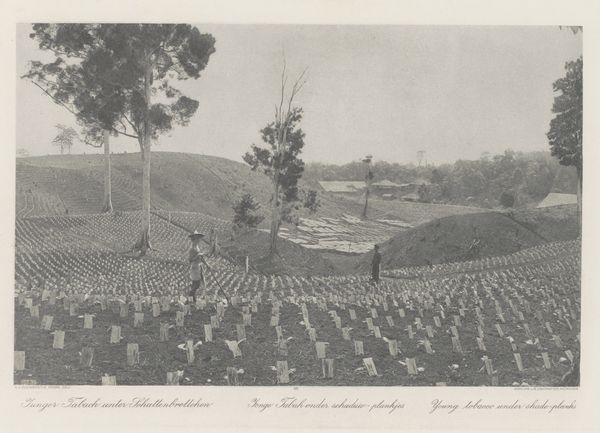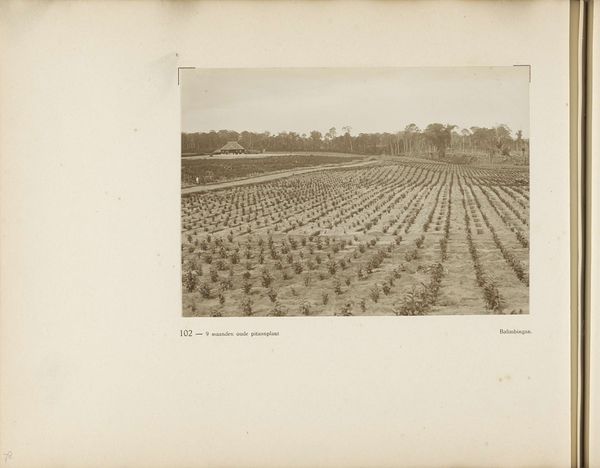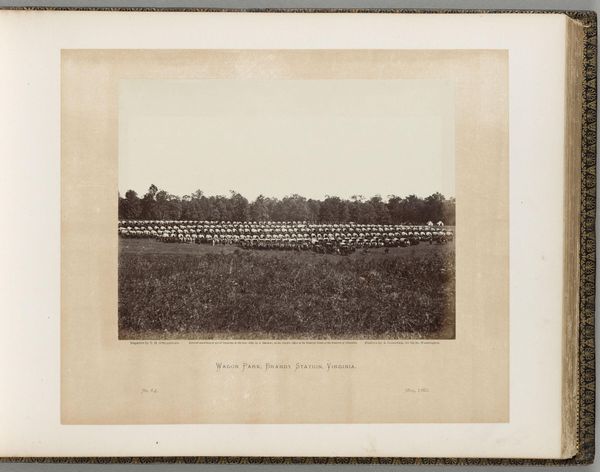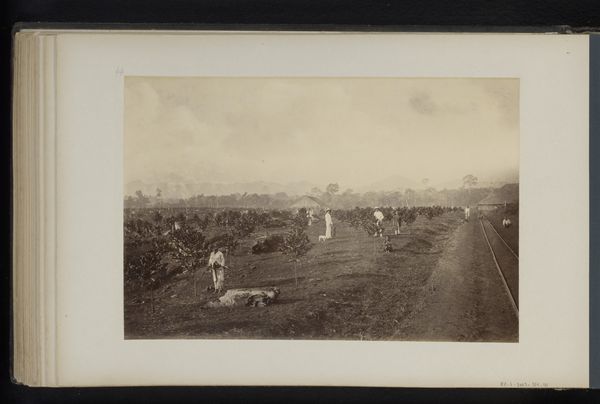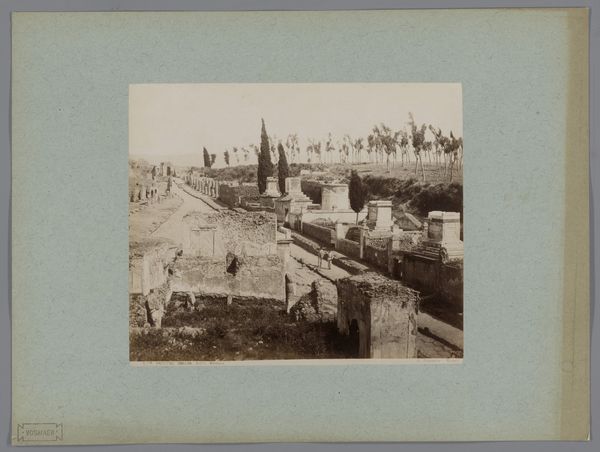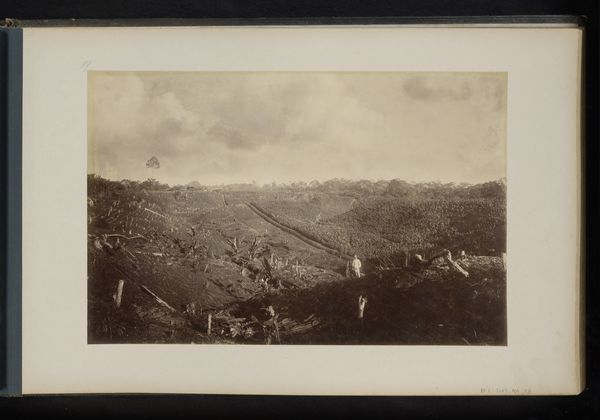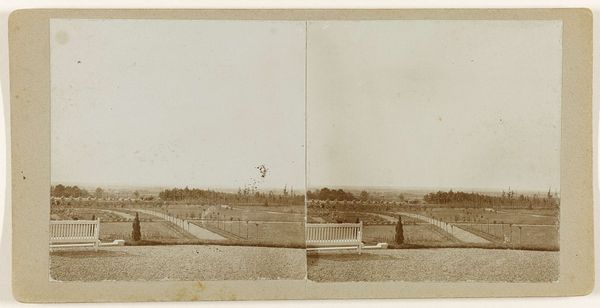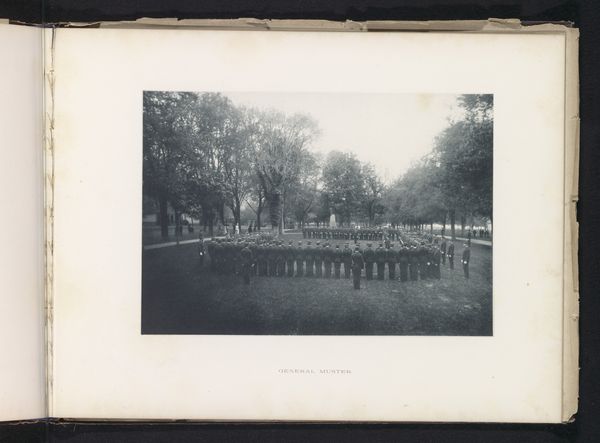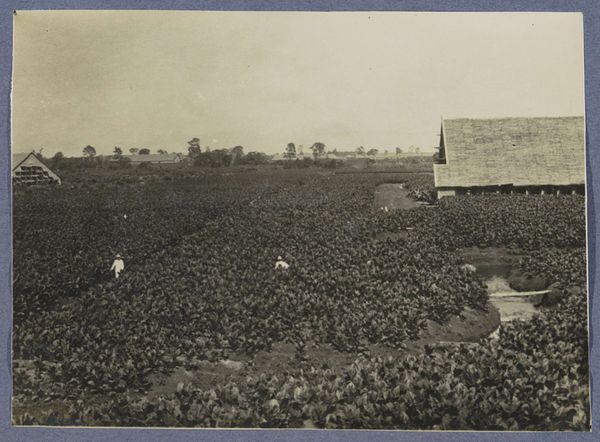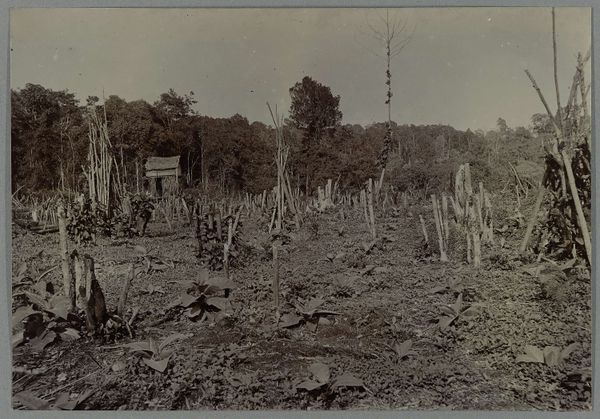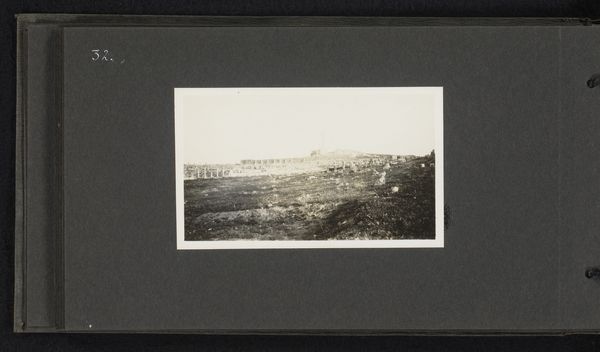
Gezicht op een veld met jonge tabaksplanten onder beschermingsplankjes in Quala Mintchirim, Sumatra c. 1890 - 1900
0:00
0:00
photography, albumen-print
#
aged paper
#
still-life-photography
#
toned paper
#
muted colour palette
#
landscape
#
photography
#
tonal art
#
albumen-print
#
realism
Dimensions: height 242 mm, width 375 mm
Copyright: Rijks Museum: Open Domain
Curator: Welcome. We're standing before an albumen print from the late 19th century, sometime between 1890 and 1900, by Heinrich Ernst & Co. It's titled "Gezicht op een veld met jonge tabaksplanten onder beschermingsplankjes in Quala Mintchirim, Sumatra," or "View of a field with young tobacco plants under protective boards in Quala Mintchirim, Sumatra." Editor: Immediately, the repetition grabs me – those small, white rectangles receding into the distance. It evokes a strange combination of order and a kind of melancholic silence. The tonal quality of the image gives a strange feeling too. Curator: Yes, the strict geometrical layout is fascinating. Notice how the photographer employs a low horizon line, emphasizing the expanse of the field. It's a study in lines and receding planes, really quite brilliant for its use of perspective. Editor: The repetition, however precise, speaks volumes about colonial agriculture. Sumatra, in that era, was deeply embroiled in exploitative plantation economies. The "protective boards" don’t just safeguard plants; they represent imposed control over the land and its people. Are they really protected when it is a forced monoculture? Curator: I see your point. However, within the image itself, there is formal elegance, the interplay between the light reflecting off the boards and the darker earth, and consider the way it guides your eye toward the buildings in the background; I appreciate its aesthetic presentation, and almost detached portrayal. Editor: But can we really separate aesthetics from the underlying power structures at play? The seemingly benign "view" romanticizes a system built on exploitation, hiding the realities of labor and land appropriation under a veneer of order. Even the "muted color palette" obscures harsh truths. Curator: Granted. Though to analyse form is not necessarily to condone such activity, no matter how intrinsic they may be to one another. The artistry lies in the composition itself, that delicate tonal art… Editor: I would only counter to say that the act of framing transforms brutal economics into consumable art. A field becomes… "scenic." The human cost conveniently disappears behind the visual architecture. We must unpack that disappearance to see that there can be no innocence in such an image. Curator: Perhaps we should see such photographic endeavours for what they really were: the commodification of image to bolster colonial narratives and capital… a perfect encapsulation of power disguised as bucolic charm! Editor: Precisely. This photo invites us to observe, yes, but also to interrogate the context behind what is visible to the naked eye, because there will be no progress until all social and historical frameworks that determine identity and inequity are recognised, understood and respected.
Comments
No comments
Be the first to comment and join the conversation on the ultimate creative platform.
